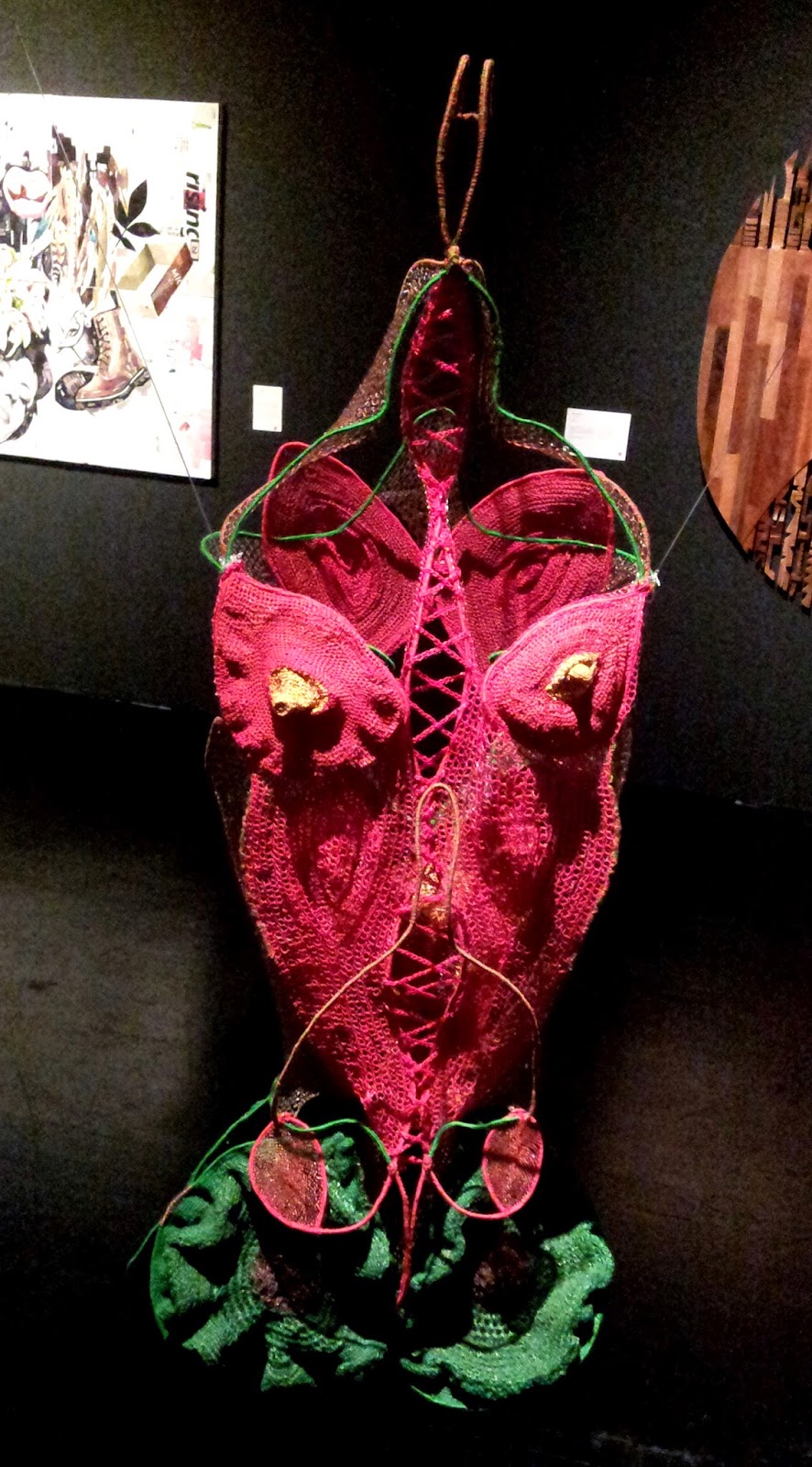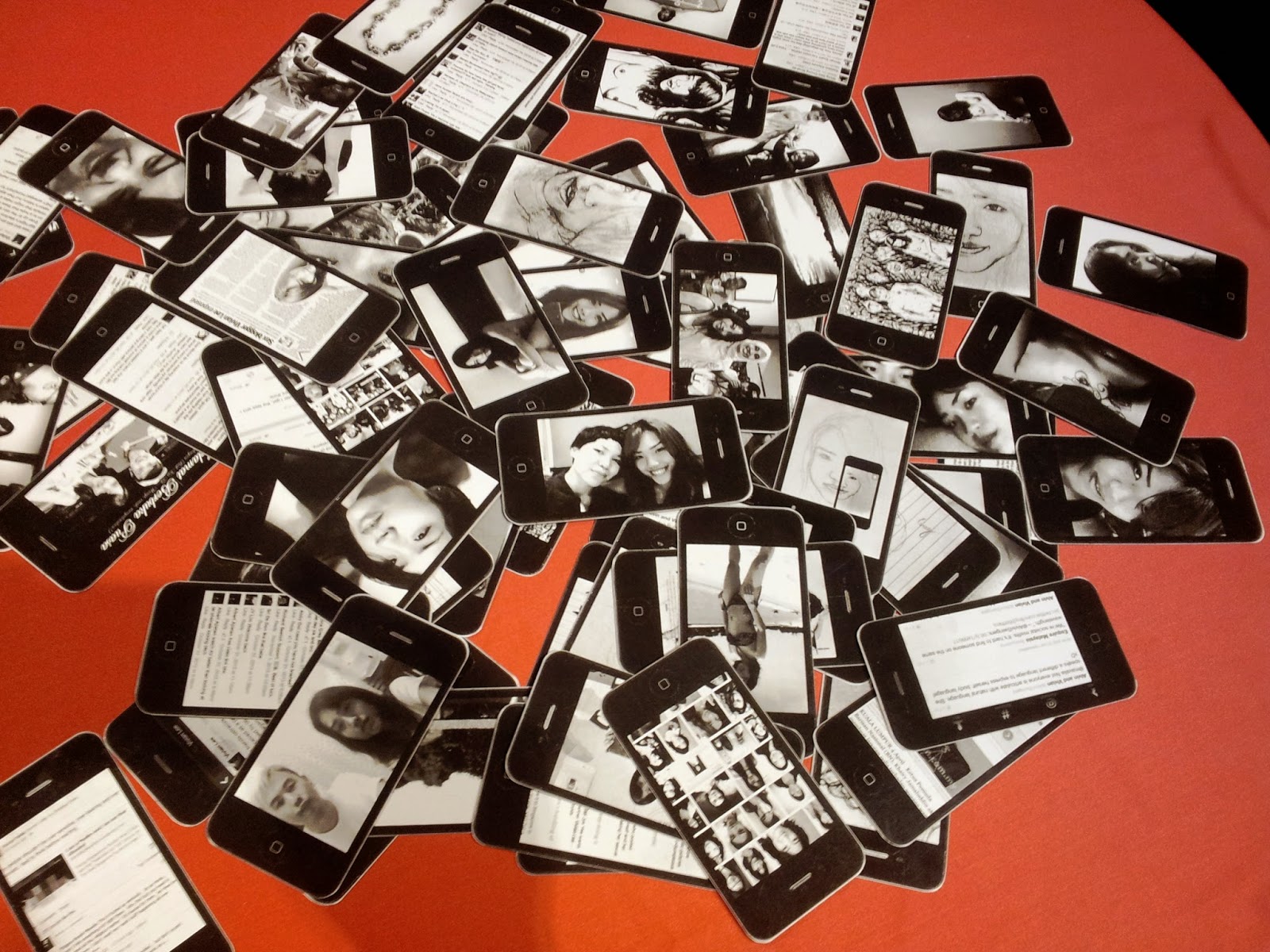The Good Malaysian Woman: Ethnicity, Religion, Politics @ Black Box
A collaboration between a women's rights group and an art gallery, this exhibition aims "to get Malaysians to rethink how women's identities and lives are shaped by the pernicious combination of ethnicity, religion and politics." Good as a moral term means little, but to situate the argument within a local context interests me, notwithstanding the superb line up of participating artists. Most exhibited works are purposely made, although some artists' existing practice already illustrate the ambitious theme, such as the biting allegories by Shia Yih Yiing and inflated balloons by Cheng Yen Pheng. Few whom are not visual artists produce beguilingly political works, in particular the hijab-wearing photographer J. Redza, and activist/documentary maker Norhayati Kaprawi. 'Panas Betul' draws a voluptuous wanita berkemban fanning herself, recalling a traditional and natural dress sense disappearing in the face of religious moderation.
 |
| Jasmine Kok - Beauty & Strength (2014) |
Also contributed by women activists are short stories printed in the exhibition catalogue, i.e. two engaging writings about Hang Jebat's concubine, and the sheer power of Mahsuri. Such readings restore the limelight on the heroine figure, lost within our increasingly Islamic and patriarchal Malaysian society. Curators express equal parts fear and audacity in staging this exhibition, where artists negotiate between the liberty of expression and practical self-censorship. Sharon Chin dispels these concerns as self-imposed obstacles, with her deck of iPhone cut-outs, scattered across a red clothed dining table. Featuring drawings and screenshots relating to Vivian Lee of Alvivi fame, the work poses questions about the judgemental appeal of social media, and those that indulge in it. Selfies and Facebook comments democratise the public persona, yet the price of fame endures precariously beyond 15 minutes.
 |
| Printed scans from Sharon Chin - Vivian Lee, Social Portrait (2014) |
The Guerilla Girls once stated that "fewer than 5% of the modern works in the Metropolitan Museum in New York were by women, but 85% of the nudes were female". Feminist art revelations are not applicable here, but the statistics clearly indicate that women artists are under-represented. As an art enthusiast, this means there are more creative expressions to be appreciated. This exhibition hurdles the perception of a "woman's show" and shows good art. Greeting the visitor is Bibi Chew's woodcuts, where symbols of society's expectations of women, are carved into female head silhouettes. Attractive examples include the theatre mask and the oven mitt, which less obvious connotations complement her scale-like incisions. Louise Low's 'Respect Yourself, Respect Your Body' creates the protruding form of a sexy lady from woven thread, its diamond-shaped configuration further adhering to an international contemporary style.
| Front and side view of Louise Low - Respect Yourself, Respect Your Body (2013) |
Yim Yen Sum negates the functional value of household objects by immersing it in emulsion, which static presentation hampers any intent for social commentary. Projecting opposite it is Okui Lala's video 'Sewing and Sew Eng', where mother and daughter join together leftover cloths, whilst operating their respective sewing machines. The split-screen composition delineates the generation gap, via juxtapositions of appliances, tables, subjects, intents, and work approaches. Capturing a functional action to create a dysfunctional product (on display and invites audience inspection), this performance demonstrates a dynamic negotiation across epochs. Deep-rooted connections beset this intercourse, revealing cultural norms that cannot be compromised, i.e. the Hokkien dialect, and the act of sewing. This outstanding artwork adopts a positive slant, among others which tackle negatively-perceived themes like power hierarchies and sexism.
| Video stills from Okui Lala - Sewing and Sew Eng (2014) |
Language is one vehicle for social engineering, which the folks at TypoKaki successfully subvert by creating new Chinese characters. Their small red dictionary introduces the compound character 女 woman into the Malaysian vocabulary, convincingly making up individual ideograms that represent women's rights-related ideas. 字 Words described in writing strokes and romanised pronunciation diminish its political properties, an implied thought which changes the way I look at dictionaries and accents in the future. Izan Tahir's 'Contemplating the Void' displays gender-biased words underlying an illustrated vulva, while Intan Rafiza translates her poem 'Pembawa' into painting. Jasmine Kok's "Corset" series recalls Ruth Asawa's wire sculptures, but its focus on the female body imbues deeper associations than aesthetic ones, relating to an oppressive device that served also as a personal burden.
| Snapshots from TypoKaki - 《女人的字》| Perkataan-Perkataan Perempuan | Women's Words (2014) |
One diptych from Yee I-Lann's latest series "Picturing Power" is displayed, the curious image of a black gown floating outside an apartment window denying any plausible interpretations. Another local photographer Minstrel Kuik exhibits a booth with two long and one tall group of pictures, exploring in turn one prime minister's facial expressions, durians & mangos, and a woman's social identity in different places. Incongruous at first sight, "The Rhetoric of Love" centres on a humorous analogy about power with local fruits, flanked by a stop-motion display of eloquent paternalism, and the individual exposed to gender stereotypes. Concise exhibition notes provide sufficient contexts while viewing the artworks, an important move taking into account the expected variety of visitors. This exhibition is incidentally felicitous, at a time when a political candidate is denounced in the media for her gender, ethnicity, and religion.
| Snapshots from Minstrel Kuik - Father says he loves me (2014) |
Comments
Post a Comment